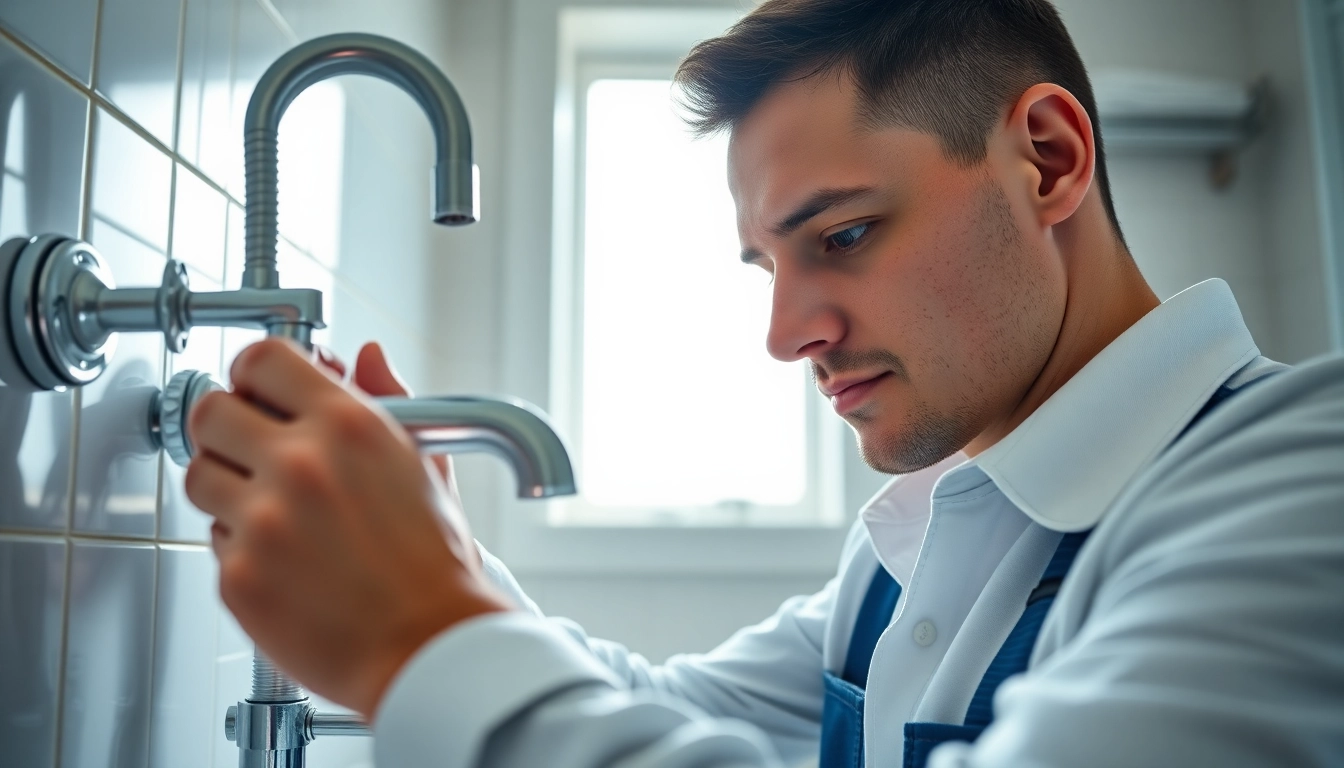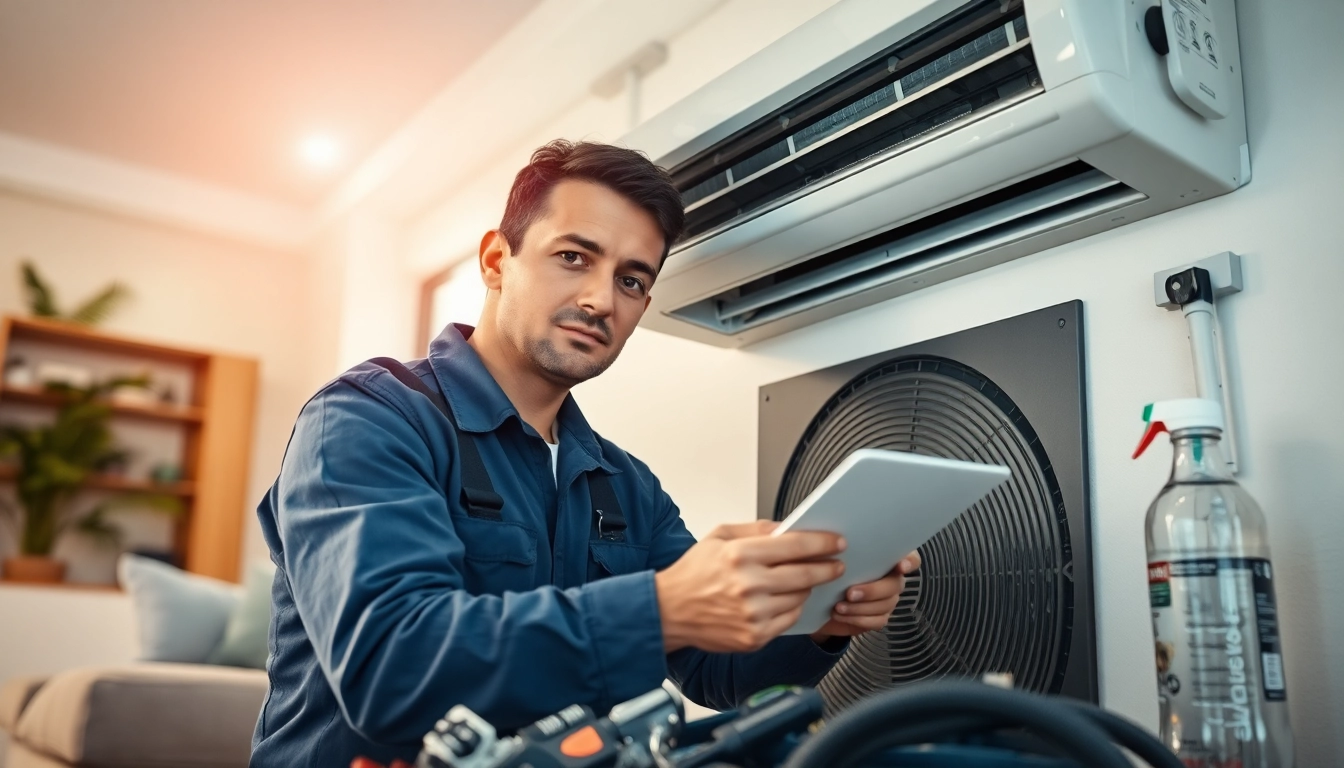Understanding the Basics of Plumbing
Plumbing is an essential system that manages the distribution and removal of water in our homes and infrastructure. As a complex network of pipes, fixtures, and valves, effective plumbing ensures clean water supply and proper waste disposal. Understanding the fundamentals of plumbing is crucial for homeowners, as it empowers them to maintain their systems and make informed decisions about repairs and upgrades. For comprehensive plumbing solutions and expert guidance, you may explore plumbing services that cater to your needs.
What is Plumbing?
At its core, plumbing refers to any system that transports liquids. It primarily encompasses two key subsystems: fresh water supply and drainage. The fresh water supply system delivers clean water through pipes to various fixtures like faucets, showers, and toilets, while the drainage system removes wastewater via pipes that channel it to sewage systems or septic tanks. This dual setup is vital for sanitation and health, as well as for daily convenience.
Key Components of a Plumbing System
A plumbing system is composed of several critical components that work together to ensure functionality:
- Pipes: The backbone of any plumbing system, pipes are responsible for transporting water. Common materials include copper, PVC, PEX, and galvanized steel, each offering specific advantages and disadvantages.
- Fittings: These are connectors used to join pipes together or to allow changes in direction. They come in various shapes, including elbows, tees, and couplings.
- Fixtures: Fixtures such as sinks, toilets, and showers provide points of use for water. They can vary in design, functionality, and efficiency.
- Valves: Valves control the flow of water and pressure within the system. Common types include shut-off valves, pressure relief valves, and check valves.
- Water Heaters: Essential for providing hot water, these units can be tank-based or tankless, catering to various household needs.
- Appliances: Dishwashers, washing machines, and other machines often rely on plumbing systems for operation, showcasing the integration of plumbing in modern homes.
Common Plumbing Myths and Misconceptions
Many myths surround plumbing, often leading to confusion and costly mistakes. Here are a few common misconceptions:
- Myth 1: All plumbing problems are emergencies.
- Myth 2: DIY plumbing repairs are always cheaper than hiring professionals.
- Myth 3: Plumbing only requires attention during emergencies.
- Myth 4: Any type of pipe can be used for any plumbing application.
Understanding the truth behind these myths can help homeowners make better maintenance decisions and avoid unnecessary stress.
Plumbing Tools and Equipment
Having the right tools is essential for effective plumbing repair and maintenance. A well-equipped plumbing toolkit can save time, improve the quality of work, and prevent potential frustrations.
Essential Tools Every Plumber Should Have
Whether you are a professional plumber or a DIY enthusiast, having the right tools on hand is imperative. Here are some key tools every plumbing toolkit should include:
- Pipe Wrench: Essential for gripping and turning pipes.
- Plumber’s Tape: This tape ensures a watertight seal on threaded joints.
- Plungers: A basic yet vital tool for clearing clogged drains.
- Screwdrivers: Both flat and Phillips screwdrivers are necessary for various tasks.
- Pipe Cutters: Used for cutting pipes to size, particularly in tight spaces.
- Adjustable Wrench: Versatile for a range of applications, from loosening nuts to tightening fittings.
- Drain Snake: A long cable used to remove stubborn clogs from drains and toilets.
How to Choose the Right Plumbing Equipment
Choosing the right plumbing equipment can be daunting, especially with the multitude of options available. Here are some considerations to ensure you select appropriate tools:
- Quality: Invest in high-quality tools that last longer and perform better.
- Purpose: Understand the specific application of each tool and choose accordingly.
- Ergonomics: Select tools that are comfortable to use, especially for prolonged tasks.
- Comprehensive Sets: Consider purchasing comprehensive tool sets to ensure you have everything you need at your fingertips.
Maintenance Tips for Plumbing Tools
Maintaining plumbing tools ensures longevity and efficiency. Follow these simple steps:
- Clean tools after each use to prevent rust and buildup.
- Store tools in a dry environment to avoid corrosion.
- Regularly check for wear and tear, replacing any damaged items promptly.
- Lubricate moving parts to ensure smooth operation.
Common Plumbing Issues and Solutions
Understanding common plumbing issues is vital for homeowners. This knowledge enables timely diagnosis and effective resolutions.
Identifying Leaks: Signs and Symptoms
Leaks can lead to significant water damage and costly repairs. Here’s how to identify them:
- Signs of Water Damage: Look for stains on walls, ceilings, or floors.
- Unexplained Increase in Water Bills: A sudden spike can indicate leakage.
- Mold Growth: This can be a sign of persistent moisture due to leaks.
- Sound of Running Water: If you hear water running when nothing is in use, investigate.
Once a leak is suspected, it is essential to locate and repair it promptly to prevent further damage.
Clogged Drains: Prevention and Remedies
Clogged drains are a common nuisance. Here are prevention tips and remedies:
- Prevention: Avoid pouring grease or fibrous materials down the drain.
- Sink Strainers: Use mesh strainers to catch food particles and debris.
- Home Remedies: A mixture of baking soda and vinegar can often dissolve minor clogs.
- Professional Help: If clogs persist, seek the assistance of a plumbing expert to perform a thorough inspection.
Water Heater Troubles: Diagnosis and Repair
Water heaters are essential for daily comfort; however, they can sometimes malfunction. Common issues include:
- No Hot Water: This could be due to a blown fuse, faulty thermostat, or gas supply issues.
- Banging Noises: Sediment buildup in the tank can cause disruptive noises.
- Leaks: Check for corrosion or damaged connections if water pools around the unit.
Regular maintenance, such as flushing the tank and checking components, can prevent many water heater issues.
Advanced Plumbing Techniques
For those looking to delve deeper into plumbing, understanding advanced techniques can enhance skills and knowledge.
Installing New Fixtures: A Step-by-Step Guide
Whether updating a bathroom or kitchen, installing new fixtures is a rewarding endeavor. Follow these steps:
- Turn Off the Water Supply: Always ensure the water supply is shut before starting work.
- Remove Old Fixtures: Unscrew and detach old fixtures carefully, noting any connections.
- Install New Fixtures: Follow the manufacturer’s instructions, ensuring all connections are secure.
- Test for Leaks: Once installed, turn the water supply back on and check for leaks.
Understanding Pipe Layout and Design
Proper pipe layout is critical for efficiency and effectiveness. Factors to consider include:
- Flow Direction: Pipes should slope correctly to promote effective drainage.
- Diameter: Use appropriate pipe sizes to prevent blockages and ensure adequate flow.
- Accessibility: Design should allow for easy access for future repairs and inspections.
Repiping Your Home: When and How
Repiping is a significant undertaking typically warranted by age, damage, or leaks in the existing plumbing. Consider the following:
- Indicators for Repiping: Frequent leaks, low water pressure, or outdated materials (like lead pipes).
- Hire Professionals: A complete repipe is complex and best handled by experienced plumbers.
- Material Selection: Choose suitable materials based on your needs and budget, typically PEX or copper.
Maintaining Your Plumbing System
Regular maintenance is crucial for a functioning plumbing system. Establishing a routine can prevent issues and extend the lifespan of your plumbing.
Regular Maintenance Checklist for Homeowners
Implementing a maintenance routine involves several key actions:
- Check for leaks around fixtures and pipes.
- Inspect toilets for efficiency and proper function.
- Flush water heaters annually to remove sediment build-up.
- Clean out drains regularly to prevent clogs.
- Examine exposed pipes in basements and crawlspaces for signs of corrosion.
Signs You Need a Plumbing Inspection
Recognizing when to call for a plumbing inspection is key:
- Strange noises or smells emanating from your plumbing.
- Persistent drain issues despite preventative measures.
- Sudden changes in water pressure.
- Water stains on ceilings or walls.
Best Practices for Long-Lasting Plumbing
Incorporating best practices into your home can significantly enhance plumbing longevity:
- Use soft water, which can reduce mineral deposits.
- Be mindful of what goes down your drains, avoiding anything that could create clogs.
- Install water alarms that notify you of leaks.
- Schedule regular professional inspections every few years.


